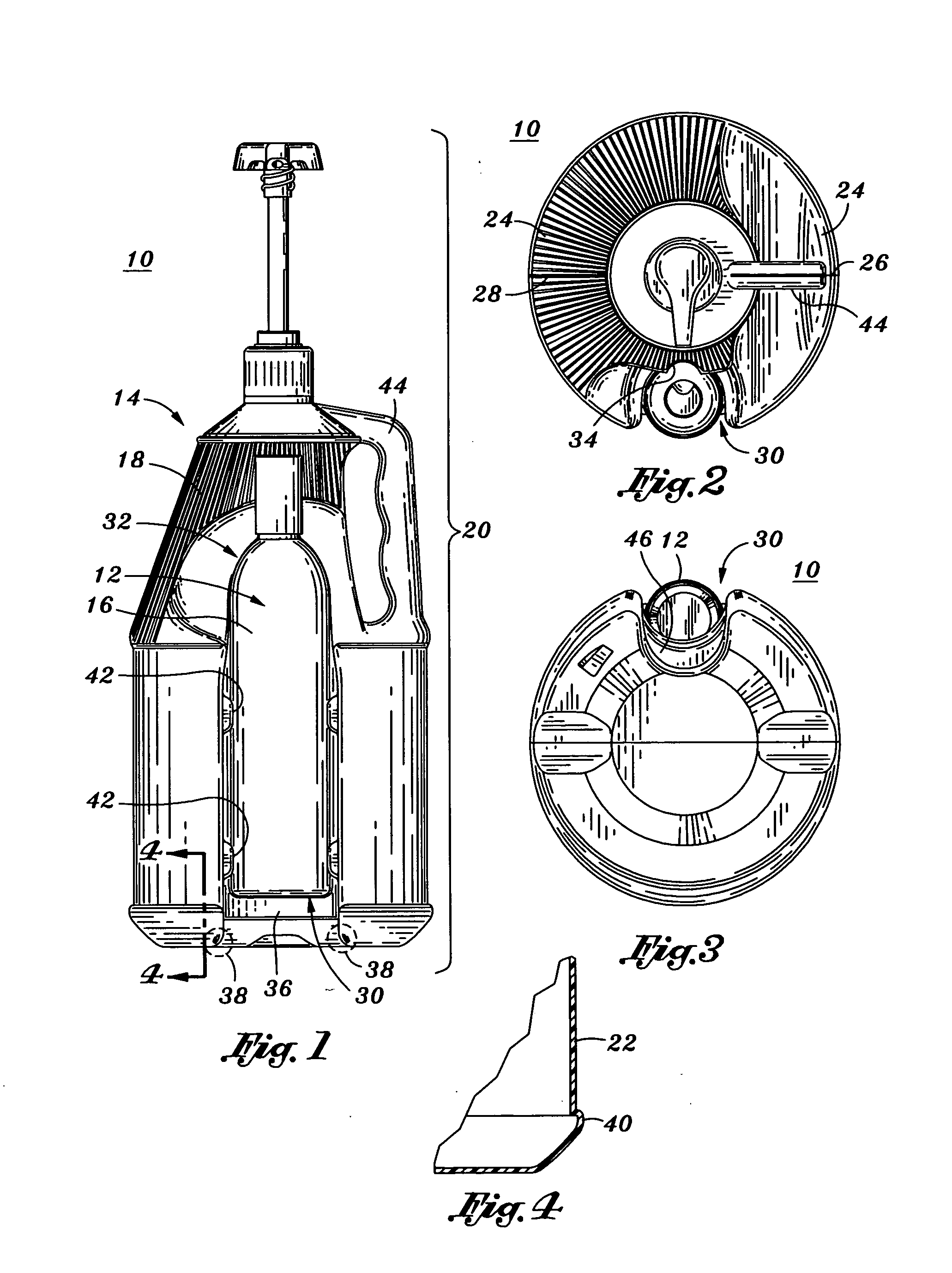Dual container system and method of manufacturing the same
a container system and container technology, applied in the direction of rigid containers, transportation and packaging, other domestic objects, etc., can solve the problems of inability to withstand repeated or repetitive impacts originating from the environment, detract from the overall utility of the system, and the dual container system of the conventional art is frequently subject to tear and/or rupture, so as to increase the flow of preform materials to selected portions of the expandable molding balloon
- Summary
- Abstract
- Description
- Claims
- Application Information
AI Technical Summary
Benefits of technology
Problems solved by technology
Method used
Image
Examples
Embodiment Construction
[0045] Referring now to the drawings wherein the showings are for purposes of illustrating preferred embodiments of the present invention only, and not for purposes of limiting the same, FIG. 1 illustrates a dual container system 10 constructed in accordance with a preferred embodiment of the present invention. Similar to its prior art counterparts, the dual container system 10 of the present invention is configured to offer the convenience and freedom of product mobility by providing an overall system in which a first container 12 (i.e. smaller container) can be engaged and disengaged from a second container 14 (i.e., larger container). However, unlike its prior art counterparts, the present dual container system 10 possesses one uniform wall thickness throughout the entirety of its body so as to be impact-resistant and further provides a unique horizontal support for accommodating the first container 12 when it engages the second container 14. These features will be better explain...
PUM
| Property | Measurement | Unit |
|---|---|---|
| height | aaaaa | aaaaa |
| height | aaaaa | aaaaa |
| size | aaaaa | aaaaa |
Abstract
Description
Claims
Application Information
 Login to View More
Login to View More - R&D
- Intellectual Property
- Life Sciences
- Materials
- Tech Scout
- Unparalleled Data Quality
- Higher Quality Content
- 60% Fewer Hallucinations
Browse by: Latest US Patents, China's latest patents, Technical Efficacy Thesaurus, Application Domain, Technology Topic, Popular Technical Reports.
© 2025 PatSnap. All rights reserved.Legal|Privacy policy|Modern Slavery Act Transparency Statement|Sitemap|About US| Contact US: help@patsnap.com



